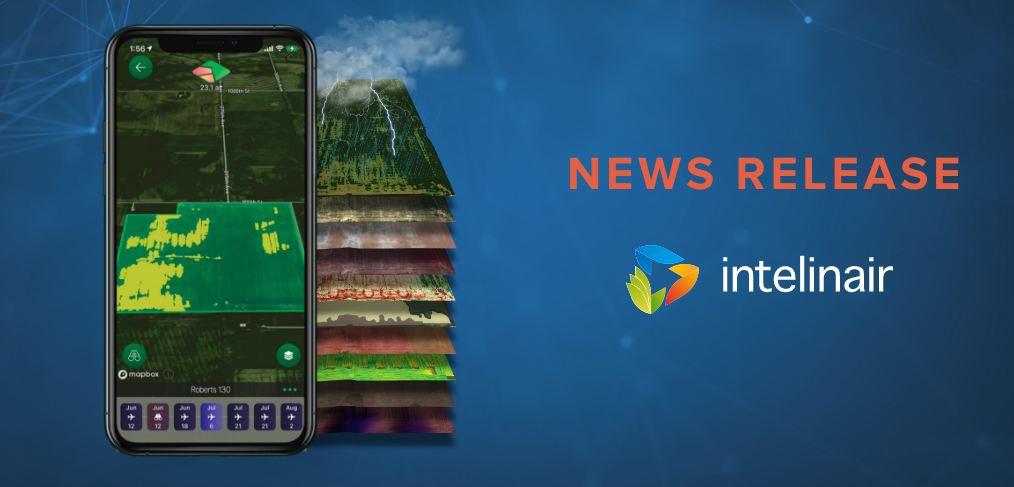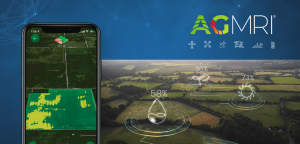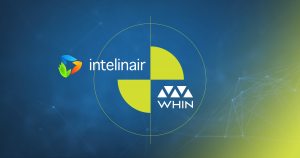INDIANAPOLIS, July 13, 2021 – IntelinAir, Inc., maker of AgMRI®, today announced the appointment of Tim Hassinger to the company’s Board of Directors.
 “We are pleased to welcome Tim to our board,” Al Eisaian, IntelinAir’s Chief Executive Officer, Chairman, and Co-Founder. “Tim brings deep experience and a proven track record in leading global agricultural businesses – accelerating innovation and growth. He joins the board at an exciting time as we continue to build on the company’s momentum and strong business fundamentals to transform digitization in agriculture. I look forward to working alongside Tim and the leadership team to advance our progress as we execute our long-term strategy and drive growth for IntelinAir.”
“We are pleased to welcome Tim to our board,” Al Eisaian, IntelinAir’s Chief Executive Officer, Chairman, and Co-Founder. “Tim brings deep experience and a proven track record in leading global agricultural businesses – accelerating innovation and growth. He joins the board at an exciting time as we continue to build on the company’s momentum and strong business fundamentals to transform digitization in agriculture. I look forward to working alongside Tim and the leadership team to advance our progress as we execute our long-term strategy and drive growth for IntelinAir.”
“I look forward to bringing my experience to help build on the positive impact the IntelinAir team is making on the agricultural industry through its differentiated technology,” said Mr. Hassinger. “I am excited to join the Board as it continues its strong focus on innovative technology and operational effectiveness.”
Biography on Tim Hassinger
Tim Hassinger brings more than 35 years of experience in the agricultural industry. He is a twice-retired President and CEO in recent years – first from Dow AgroSciences, the agricultural subsidiary of The Dow Chemical Company, followed by Lindsay Corporation in 2021. Hassinger joined Dow AgroSciences in 1984 where he held a number of sales, supply chain, marketing, and management roles, led global business teams and lived and traveled extensively in six continents. He was promoted to President and CEO of Dow AgroSciences in 2014. One of his last initiatives at Dow AgroSciences was leading the company through the merger between The Dow Chemical Company and DuPont, which eventually led to the formation of Corteva Agriscience in 2019. In 2017, Mr. Hassinger was named President and CEO of Lindsay Corporation of Omaha, Neb., a leading developer of water management solutions for agriculture. While at Lindsay, he led the company’s transformation to enhance the company’s ability to deliver value to shareholders through improved financial performance. He retired from Lindsay Corporation in 2021 and currently serves as an advisor for the Company. Mr. Hassinger serves as Advisor to the USDA Agriculture Policy Advisory Committee and Board Member for AGDATA, LP. He was raised on a farm in Central Illinois and graduated with a degree in Ag Economics from the University of Illinois. He was recently named National Agri-Marketing Association’s (NAMA) 2021 Agribusiness Leader of the Year.
About IntelinAir, Inc.
IntelinAir, Inc., the automated crop intelligence company, leverages AI and Machine Learning to model crop performance and identify problems enabling commercial growers to make improved decisions. The company’s flagship product, AgMRI® aggregates and analyzes data including high resolution aerial, satellite, and drone imagery, equipment, weather, scouting, and more to deliver actionable Smart Alerts on specific problems in areas of fields as push notifications to farmers’ smartphones. The proactive alerts on operational issues allow farmers to intervene, rescue yield, capture learnings for the next season, and identify conservation opportunities for sustainable farming. Annually IntelinAir analyzes millions of acres of farmland, helping growers make thousands of decisions for improved operations and profitability. For more information, follow IntelinAir on LinkedIn, Facebook, Twitter, and Instagram and visit https://www.intelinair.
®Trademark of IntelinAir, Inc.
#AgMRI #Intelinair #RowTracer #WeedWatch #HeatSeeker #TrendZone #YieldRisK #HelpingFarmersProsper #TransformingGlobalAg














